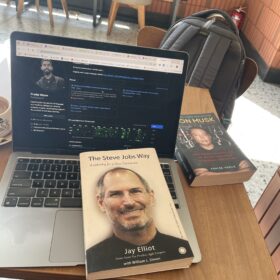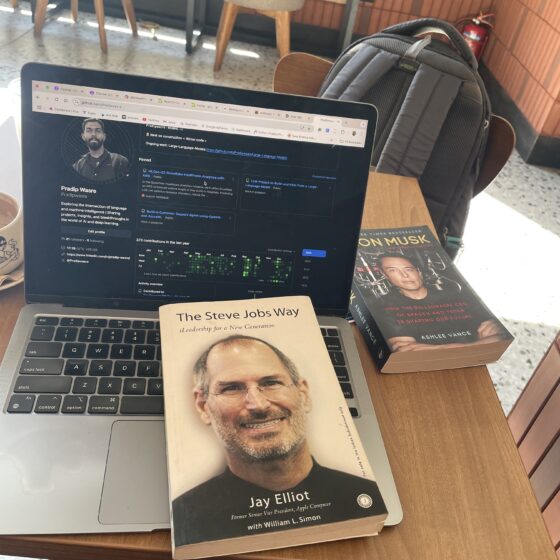W2: Day 5- Enhancing LLM capabilities with Tools and Real World Applicaitons
As I complete Week 2 of my journey into mastering LLMs, today’s focus is on AI tools and their integration into large language models (LLMs) to build advanced, highly-capable assistants. This week has been an incredible deep dive into creating multi-modal chatbots, interactive AI interfaces using Gradio, and leveraging tools to extend the abilities of LLMs. Today, I explored how tools elevate the potential of AI assistants by enabling them to perform real-world tasks, fetch external data, and deliver richer, action-driven interactions. Let’s take a deeper look at these concepts and tie together what I’ve learned so far.
A Quick Refresher on Key Concepts from This Week
1. Creating Interactive AI Interfaces with Gradio
Gradio allows us to quickly build interactive user interfaces for AI models. It bridges the gap between complex AI systems and end-users, providing an accessible front-end for real-time interactions. With Gradio, I learned how to:
- Create user-friendly chatbot interfaces.
- Implement real-time streaming for dynamic, fluid conversations.
- Deliver a seamless experience for interacting with AI systems.
2. Mastering AI APIs for Real-Time Applications
API integration is the backbone of connecting LLMs to practical use cases. I explored:
- How to use OpenAI APIs to interact with GPT-4 and build powerful conversational systems.
- The concept of adversarial AI conversations and how to handle them effectively.
- Techniques for achieving natural, real-time responses in AI-powered tools.
3. Enhancing LLM Capabilities with Tools
Tools act as external functions that LLMs can call during a conversation, enabling:
- Enhanced responses by fetching data, performing calculations, or executing specific actions.
- Richer, context-aware conversations by dynamically incorporating knowledge or actions into responses.
- Building advanced assistants capable of decision-making and task execution.
The ability to define and implement tools is a game-changer for creating assistants that go beyond simple Q&A interactions.
What Are AI Tools? A Quick Recap
AI tools are custom functions or external APIs that extend the capabilities of LLMs by allowing them to perform specific actions. For example:
- Fetching ticket prices for an airline chatbot.
- Booking appointments or making reservations.
- Performing calculations or modifying the user interface dynamically.
This week, I explored how to define tools, describe their functionality to the LLM, and enable the LLM to decide when to use them.
Mastering AI Tools: Building Advanced LLM-Powered Assistants
Today’s learning centered on using tools to build advanced assistants that integrate seamlessly with APIs and other systems. Here’s what I uncovered:
1. Defining Tools for Specific Tasks
The first step in enabling tools is to define them clearly so the LLM understands their purpose. For example:
- Specify what the tool does (e.g., fetch ticket prices).
- Define the input parameters the tool requires (e.g., the destination city).
- Describe the output format of the tool’s response.
By providing this metadata, the LLM can call the tool dynamically during a conversation, making interactions smarter and more context-aware.
2. How LLMs Use Tools
The workflow for using tools with LLMs involves:
- The LLM identifying when a tool is needed based on user input.
- Sending a structured request for the tool to execute.
- Incorporating the tool’s result into its response to the user.
For example, in an airline assistant, if a user asks, “How much is a ticket to Berlin?”, the LLM recognizes the need to fetch the ticket price and calls the appropriate tool. The result is returned, and the LLM generates a complete response: “The ticket price to Berlin is $499.”
3. Use Cases for AI Tools
Tools open up endless possibilities for building feature-rich AI assistants. Common use cases include:
- Fetching Data: Querying APIs or databases to retrieve dynamic, up-to-date information.
- Performing Actions: Booking appointments, placing orders, or sending emails.
- Calculations: Performing math or data analysis on the fly.
- UI Modifications: Dynamically altering the interface to improve user experience.
This flexibility transforms LLM-powered assistants into powerful task-oriented agents capable of delivering actionable outcomes.
How Tools Enhance Real-World Applications
Tools are especially valuable in real-world applications where AI assistants need to provide reliable and actionable information. For instance:
- In e-commerce, tools can fetch product availability or calculate discounts.
- In customer support, they can log issues or book appointments.
- In travel, as I explored with the airline assistant, they can provide ticket prices or flight details dynamically.
The key is to carefully define the tools, their input/output parameters, and integrate them seamlessly into the assistant’s workflow.
What’s Next: Equipping LLMs with Agents
As I wrap up Week 2, the next step is to elevate these concepts by introducing agents. Agents are AI systems capable of carrying out sequential tasks using tools, LLMs, and APIs. Here’s what’s coming next:
- Defining Agents: Agents combine tools and LLMs to perform multi-step activities.
- Sequential Task Execution: Agents can carry out complex workflows, such as booking flights, sending confirmation emails, and updating user profiles—all in one conversation.
- Building a Multi-Modal Assistant: By integrating agents, I’ll complete the transition from single-use tools to highly-capable, autonomous assistants.
Key Takeaways from Week 2
- Tools expand LLM capabilities by allowing them to perform real-world tasks, like fetching data or executing actions.
- Interactive interfaces like Gradio enable seamless communication between users and AI models.
- API mastery is essential for creating real-time, reliable AI assistants.
- Preparing for agents and multi-modal assistants is the next logical step in building advanced LLM systems.
This week has been transformative, as I’ve gone from exploring APIs and building interfaces to equipping LLMs with tools for enhanced functionality. Tomorrow, I’ll dive into agents and complete my first multi-modal AI assistant capable of handling sequential activities. Stay tuned for more insights! 🚀

